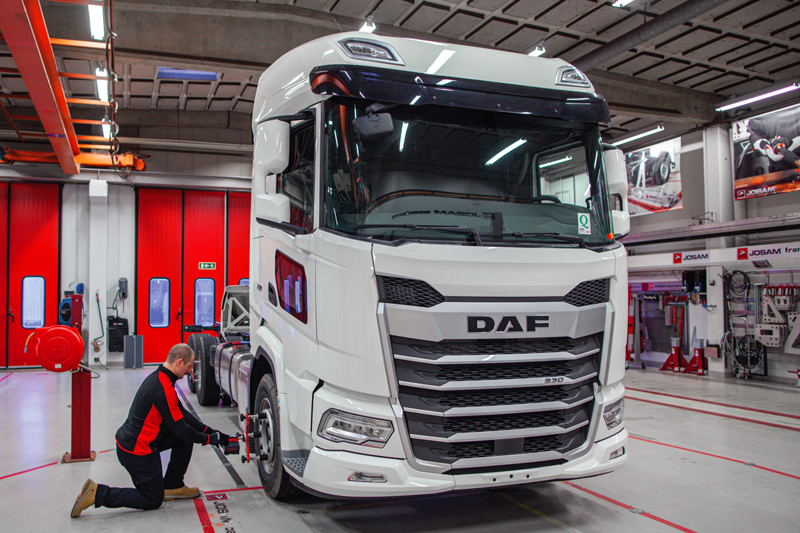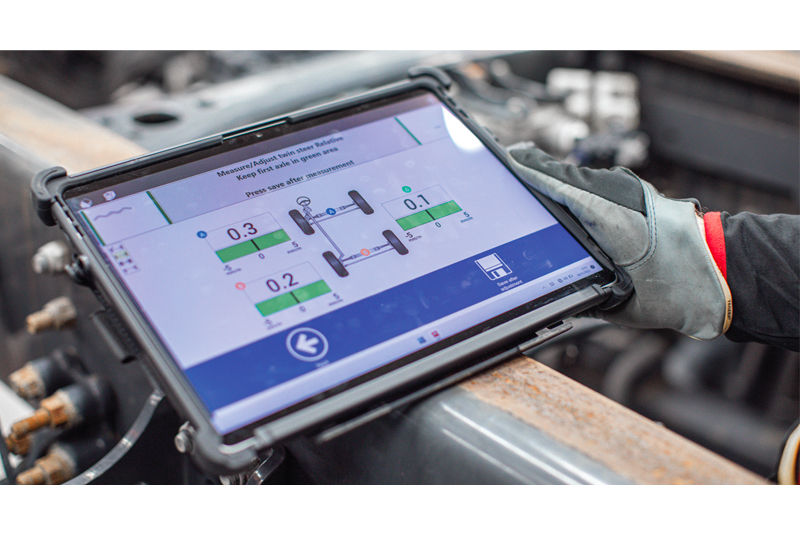
Ever wondered how often wheel alignment should be carried out? Russ Coad, Managing Director at AES UK, offers some pointers on when, why and where.
We are often asked how often you should perform wheel alignments on a commercial vehicle. The simple answer is as often as possible for the very fact that misaligned wheels can increase rolling resistance, resulting in premature tyre wear and greater fuel consumption, with a consequential rise in costs for both. And with the current economic conditions it is as important as ever to ensure commercial vehicles are maximising efficiencies in these two areas.
The climate impact of a commercial vehicle is also influenced by wheel alignment; reduced fuel consumption goes hand-in-hand with CO2 emissions and premature tyre wear goes hand-in-hand with ‘tyre dust’ particles.
So, at what points should alignments take place? At an absolute minimum alignment should be carried out at least once per year. The stringent criteria for commercial vehicle MOTs mean that often vehicles must go through vigorous checks prior to being sent for MOT so this is an ideal time for wheel alignment to be carried out.
For those workshops supplying vehicles to customers, pre-delivery inspections offer a perfect time to carry out a full alignment check. It also gives the workshop a chance to pre-empt any tyre wear issues that could be claimed on warranty should this be the case. Additionally, a “post break-in” alignment should be carried out between 15,000-30,000 miles or three months, whichever comes first.
Another occasion when alignment should be considered is when replacing steering components such as drag links, track bars and ball joints etc. These can all throw a vehicle out of alignment and counting threads can be wildly inaccurate so it is better to replace steering components and carry out a full procedure.
Driver issues
Quite often an ‘off-centre’ steering wheel or a ‘pull’ can be down to a misaligned vehicle. Driver complaints or issues can hold vital information and combined with an alignment can help diagnose the problem. Driver concerns will not always be down to misalignment but it’s worth carrying out an alignment to at least either identify or rule out the issue.

Proactive alignment is the most overlooked aspect when it comes to frequency of alignments. Our philosophy is very much to carry out alignments and identify and rectify potential problems before they become an issue. We often see workshops carrying out alignments on the back of a tyre wear issue; the problem with this is that it’s too late, in most cases, to save the tyre. This is the reason that alignments should be carried out at least once per year, but preferably at all of the above mentioned opportunities, and proactively three to four times per year to pre-empt any issues.
Contrary to popular belief tyre wear cannot be fixed by carrying out an alignment. If a tyre is worn it cannot be retrieved and it’s unlikely to prolong the tyre’s lifespan. Essentially, it’s pointless carrying out an alignment check on a worn tyre unless it’s in the very early stages or, is going to be replaced in which case an alignment should be carried out post tyre change.
By way of conclusion, regular tyre alignment is an investment that maintains the efficiencies of your fleet, keeps costs down and ultimately makes for a better driving experience for operatives.









